PAM-PRACTICE NOTES 3-2020, MY POINT OF VIEW… Update: I wrote this article way back in January 2021, as a response to PAM’s Practice Advisory No.3 on Contract Administration by the Architect should also include ultra vires obligation such as re-negotiating contracts for the parties. The findings of KL Eco City Sdn Bhd v Tuck Sin Engineering & Construction Sdn Bhd & Anor[1], ultimately seals the fate of the Architect not to move beyond its obligation under the contract. YA Dato Lim Chong Fong holds: “[46] Unless actual authority is conferred, the architect as agent of the employer in a construction contract generally does not have the ostensible authority to waive the contractual rights of the employer in respect of conditions precedent such as on notice requirement as held in City Inn Ltd v Shepherd Construction Ltd (supra). Actual authority can be specifically conferred where expressed in the construction contract; see Tropicon Contractors Pte Ltd v Lojan Properties Pte Ltd [1989][2]. There is however no waiver provision found in clause 23 of the PAM Conditions.” “[47] In the premises, I find and hold from the evidence adduced that the Architect did not have either actual or ostensible authority to waive the condition precedent set out in clause 23.1(a) of the PAM Conditions.” On this instance, the HC held that the Architect must always maintained its role as the Employer’s Agent and an impartial certifier to the Contractor and must never attempt to change the conditions of the contract, i.e. by acting ‘lenient’, to waive and by any means that will be taken or construed as changing the terms of the contract breaching the fundamental of parole evident rules. Under this basis, PAM’s Practice Advisory No.3 has ‘grossly erred’ and required immediate retraction and amendment. ----------------------------------------------------- [1] [2021], second trench judgement to KL Eco City Sdn Bhd v Tuck Sin Engineering & Construction Sdn Bhd & Anor [2020] 1 LNS 360 [2] 3 MLJ 126 and [1991] 2 MLJ 70 CA PAM has taken a bold step to invite both current presiding judges of the High Court and Federal Court, YA. Dato’ Lim Chong Fong (HCJ) and YA. Dato’ Mary Lim Thiam Suan (FCJ) to moderate a public forum - ‘Surviving Post Covid-19 – A Common Sense Approach’.[1] In the said forum, I am attracted by the PAM Past President, Datuk Ar. Tan Pei Ing’s revelation on the ‘PAM-Advisory’, now made available to members as PAM-Practice Notes 3-2020.[2] The question remain is whether such an advisory, mandating the Architect as contract administrator CA, to facilitate parties to the contract to ‘alter’ their contract, doubling up as a ‘contract-negotiator’ to re-negotiate their existing-contract, to account for the Covid-19 scenario? Let’s investigate further what the ‘advisory’ says. One, PAM contract has existing ADR clauses that parties can utilise. What is most surprising is – ‘the mediation process can be lengthy and costly’ … it means to say, PAM’s mediation are ‘lengthy and costly’? Or mediation, in general are ‘lengthy and costly’?[3] Both the Covid-19 Mediation Scheme and the AIAC is offering pro-bono mediation scheme, how costly can that be? Furthermore, it usually takes a few days (the most, 2-days), to sort out a mediation session, beyond that is simply futile. There must be basis and justification to state as to why mediation are ‘lengthy and costly’? Second, in the ‘advisory’, the CA/Architects should (rather meaning, shall being mandatory), ‘take a practical approach to mitigate dispute’. What is mean by ‘practical approach’? An ‘illegal-approach’, i.e. ultra-vires approach, can also be practical. What is ‘mitigating-dispute’? Dispute-avoidance or dispute-resolution? The latter is provided for in the contract, while the former is entirely something-else, implied rather than expressly provided for in the contract. When read together with BIPC joint advisory notes, ‘consultants are encouraged to […] facilitate […] explore options […] balance their respective interest […]’, meaning to assist parties in ‘renegotiating’ their contracts on a ‘good-faith’ basis. Also note the use of the word ‘encourage’, i.e. non-mandatory, as compared to PAM-Advisory, uses of the term ‘should’. Again, the PAM-Advisory mandated that ‘Architects should encourage contractual parties […] with the objective of preserving common-interest as opposed to insisting on strict contractual-rights’.[4] As to how one defines, ‘objective of preserving common-interest’ as ‘good-faith’ is a matter of parties’ discretion but to insist on Architects to ‘opposed to insisting on strict contractual-rights’, is absolutely, uncalled-for, or to put it in another words, architect ‘must’ unilaterally act ultra-vires as a matter of ‘practicality’? This is where the ‘trouble will arise’, for architects … ------------------------------------ [1]<https://www.facebook.com/events/391034642337065/?acontext=%7B%22event_action_history%22%3A[%7B%22mechanism%22%3A%22search_results%22%2C%22surface%22%3A%22search%22%7D]%7D> [2] <https://drive.google.com/file/d/1b4q4fNC3gj3godY9XZdtBqSZicVZGD2q/view> [3] PAM-Practice Notes 3/2020, p.1 [4] PAM-Practice Notes 3/2020, p.2 The position in law is Good faith, best endeavours and fair dealing - In many legal system, law of obligation recognises that contract has to be formed in bona fide i.e. ‘good faith’, but not with the English law.[1] Some cases may have been held against mala fide i.e. ‘bad faith’.[2] English law do not recognise, the contracting party has to act in good faith.[3] As to the reason why, traditionally, contract starts from ‘rugged individualism’, parties had to look after themselves in striking a bargain.[4] English law prefers to develop incrementally and a ‘broad general principle’ would generate too much uncertainty. Effect should therefore be given to expressly assumed obligations to act in good faith.[5] Such as an ADR clause requiring party to seek resolution in good faith.[6] A duty of good faith has to be expressly stated to be enforceable.[7] With court support.[8] However, in recent cases, English law has been seen to be ‘hostile’ towards the doctrine of good faith, although attempt to recognise such doctrine is intrinsically driven. [9] Without reliance to such doctrine, some cases are ‘difficult to reconcile’.[10] To put effect on this doctrine, the term of good faith has to be expressly stated.[11] Alternatively, court may imply a term comprising good faith.[12] Sometimes, not possible to imply such term.[13] In situation of a reduction in obligation[14], unduly onerous obligation[15], creating redundancy clauses[16] and with unintended consequences[17]. Thus the meaning of good faith will depend on its context.[18] This was the case in where a long-term PFI contract contained an express obligation of good faith, the court held that the trust has be in ‘material’.[19] Similarly, a term requiring the parties to “co-operate with each other in good faith” was interpreted as requiring a party not to exercise its discretion in an arbitrary, capricious or irrational manner.[20] Unlike the NEC contract, PAM Form has no basis on ‘good-faith’. ------------------------------------------- [1] Interfoto v Stiletto [1989] Q.B. 433 [2] Arcos v EA.Ronaasen[1933]AC470 [3] Walford v Miles[1992]2AC128 [4] Gold Group v BDW[2010]EWHC1632(TCC) [5] Compass v MidEssex Hospital[2013]EWCACiv200 [6] Emirates v Prime Mineral[2014]EWHC2104(Comm) [7] Shaker v Vistajet[2012]EWHC1329 [8] Petromec v Petroleo[2005]EWCACiv891 [9] YamSeng v International-Trade Corp.[2013]EWHC111(QB) [10] First Energy v Hungarian Bank[1993]2Lloyd’sRep194,196 [11] Chelsfield v Qatari Diar[2015]EWHC1322(Ch) [12] Fujitsu v IBM[2014]EWHC752(TCC) [13] Myers v Kestrel[2015]EWHC916 [14] Greeclose v National Westminster Bank[2014]EWHC1156(Ch) [15] Hamsard v Boots[2013]EHC3251(Pat) [16] Portsmouth v Ensign[2015]EWHC1696(TCC) [17] MSC Med.Shipping v Cottonex Anstalt[2016]EWCACiv789 [18] Walford v Miles [1992] 2 A.C. 128: Whether and to what extent the law of contract recognises enforceable obligations as to the way in which the parties are to behave? Where the parties act in a manner which conveys an intention to be bound, can there be an enforceable obligation to negotiate in good faith? [19] Medirest v Mid Essex NHS Trust [2012] EWHC 781 QB [20] Mid Essex v Compass Group [2013] B.L.R. 265 at 280 Three, the ‘advisory’ expressly mandated, ‘Architect should […] in guiding the negotiation between parties […] fair-resolution [meaning, good-faith basis]’, emphasis added. It is crystal clear that the ‘advisory’ mandated the Architect to facilitate parties to renegotiate their contract, in its capacity as a ‘para-legal’ professional, failing which, could the Architect be sued as legal-advisors, in this context of discharging its role? Fourth, the law holds that Immunity of certifier – in earlier case, certifier has immunity[1] only to be overturned later, that certifier has no immunity[2] as he holds a duty of care both as the agent to the employer and an impartial certifier to the contractor. Immunity only applies where there was dispute which called for a judicial decision such as adjudication[3] and arbitration. When the ‘advisory’ calls for ‘Architects are encouraged to be more lenient […]’[4], and ‘leniency’ is never an expressed ‘jurisdiction’ of the CA, it placed the Architects in very awkward ‘illegal’ positions, as to mean, having to consider that the PAM form has not taken a foreseeable circumstances of a pandemic, Architect could now take a ‘more lenient’ view to grant EOT, even when such is against the provision of the contract? How, sensible is such with regards to all the other roles as an impartial certifier, now subjected to challenge? ---------------------------------------------- [1] Chambers v Goldthorpe[1901]KB624 [2] Sutcliffe v Thackrah[1974]AC727 [3] S.108(4)HGCRA [4] PAM-Practice Notes 3/2020, p.2, item 1 Fifth, Loss and Expenses in the ‘advisory’ is stated that if on the basis of force-majeure, it cannot be granted, but and again, contradicted by the following, ‘parties agree that the costs […] should be shared’[1], meaning the entire contract has to be rewritten and Architect has this role to renegotiate the term for the parties … and the same can be said, to the rest of the contractual procedural-terms, if not taken with extreme-care, would rendered the architect acting ultra-vires as both an impartial-certifier and an agent of the employer. --------------------------------------- [1] PAM-Practice Notes 3/2020, p.2, item 2 Concluding, given the prima-facie meaning of the ‘advisory’ now, architects are empowered to facilitate parties of a PAM-Form Contract to renegotiate their contractual terms; and failing to exercise this ‘new-positions’ with care, will opens up ‘new-avenue’ for the architects to be sued and hopefully, with the current position of L3 Architects Sdn Bhd v PCP Construction Sdn Bhd [2019] 1 LNS 1321, Architects in Malaysia can be spared and have ‘immunity’ to do what it wishes …[1] ------------------------------------------- [1] < http://www.davidyek.com/adr/architect-has-no-duty-of-care-to-the-contractor-the-malaysian-approach> Postscript:Truly honoured to have senior and well known architectural practitioners to read my opinion on ‘matters affecting the profession’ in https://www.facebook.com/davidyekarchitect/posts/3003622449872587 and it is valuable that the comment given to me really inspiring, especially to younger-practitioners. It is a pity that he did not ‘comment’ directly in the comment section. After much persuasion, he agrees that his comment be made anonymously, and I truly thank him for his generosity and kind gesture:
Hi David. Read your review of the PAM advisory. I don’t want to comment on the contents because I think you had thought through the issues and while there are areas I might have slightly different take, it is better than a lot of opinions floating around. I had one observation to make. In all the publicised force majeure cases that come across before this advisory or indeed this pandemic, one party to the contract declare force majeure and state his basis for doing so. And then state the consequences of his declaration. So far we all assume that because the pandemic occur a force majeure event is in play. My considered opinion is force majeure has to be declared by one or both of the parties to the contract and the other party or indeed parties if more than one contract is involved; can dispute the declaration. I note your scepticism about architects being empowered to help parties to re-negotiate terms of contract and if I read it right, I will also add I agree that it is dangerous grounds we are encouraging architects to go on. Especially if they had not familiar with what they in for. Architects who will intervene as an ad hoc mediator are usually quite sure of what the limits of their contribution should be. I hope we had not encouraged some to bite off more than they can chew. Truly, hope that younger generations of architect ‘walk this path’ carefully, as the advisory is, in my mentor’s word, ‘not-gospel’ … Have a nice day, folks!
1 Comment
Postscript (2): Further s.7Covid-Act HC tests:
-------------------------------------------------------------- [1] Malaysian Federal Court in SPM Membrane Switch Sdn Bhd v Kerajaan Negeri Selangor [2016] 1 CLJ 177; Ginma Industries Sdn Bhd v Xin He Feng (M) Sdn Bhd [2021] MLJU 1675 [2] Ravichanthiran A/L Ganesan v Lee Kok Sun (2021) MLJU 1876 [3] Armada Petroleum Sdn Bhd v Alam Maritim Resources Bhd [2021] Postscript: As at to date [Sept 2021], there were very limited case-law demonstrating the operation of the Covid-19 Act. So far courts had demonstrated that settlement agreement entered post termination of a tenancy fall outside the Act[1]; tenancy agreement expired within the publication of the Act, with prior notice to renew and eventually terminated, such agreement is deemed to have been validly terminated[2]; a consistent breach of payment obligations prior to the Act, will not be protected by the Act[3]; the Act provides protection to future ability to fulfil obligations and not existing obligation to pay[4]; and the Act provides extension to the time-bar to sue[5]. ---------------------------------------------------------------------------------- [1] WPP Business Services Sdn Bhd v Cosmopolitan Avenue Sdn Bhd [2021] MLJU 1042: s.7 Covid-19 Act [2] Ang Pi Kui & Anor v Lee Wee Teck & Anor [2021] 1 LNS 58: s.10 Covid-19 Act [3] Pilecon Engineering Bhd v Malaysian Trustees Bhd [2021] MLJU 1167 [4] Armada Petroleum Sdn Bhd v Alam Maritim Resources Bhd [2021] [5] Uni Construction & Realty Sdn Bhd v Tersaim Lall [2021] Having to term with the Temporary Measures for Reducing the Impact of Coronavirus Disease 2019 (COVID-19) Bill (“COVID Bill“), the reality of “Building Contract is ‘pregnant’ with disputes”[1], are very-very real. Not only that the Parliament, via its sovereignty- within the three-pillars of democracy[2], has in-interim, ‘re-wrote’ the contracts for the parties, not even by the courts[3], in certain ways[4], coupled with multiple ‘flip-flop’ conundrums from the Government of the day[5], impacted the construction industries with ‘gapping’ trench that the construction industries stakeholders are having difficulties to fill[6].
These ‘lacuna’[7] opportune upon many ‘fringe-parties’ to institutionalise their ‘relevancy’ from promoting mediation as not a dispute-avoidance mechanism but a dispute-resolution that has no statutory-bites[8]; to ‘creatively’ re-package ‘new-professionals’, i.e. ‘facilitative-negotiators’ to assist parties to ‘re-negotiate’ their existing-contract, often making them-murkier; the traditional core-consultants, i.e. the Architects, Engineers and QS having to find ways to ‘salvage’ the unprecedented-events as they are the parties that were hit the most, with the contract-terms that had never foresee such pandemic, at such a scale[9]. The Covid-Bill has left many questions unanswered; came rather-late when the damage has already been done[10]; ‘tapestry’ and temporal in nature[11] with no ‘statutory-solutions’ in place, even mediation is non-mandatory[12]. There also arise for the fact that many agencies are running to provide ‘mediation’ as dispute-resolution provider, with or without a single-idea as to the real issues faced by the construction-industry stakeholders, central on the cardinal-issues of payment and time.[13] Similarly, there are other quarters that question the ‘conflicting-interest’ and the effective roles of the Architects, Engineers and QS as ‘mediators’ for construction-related matters, especially those projects under their watch.[14] Who on earth, would not have been in a better position, for dispute-avoidance in the first place, if not for the role of the Architect, whom from the onset has been ‘statutorily-empowered’ to self-regulate[15]; statutorily-regulated[16]; and in common law provision, the impartial certifier[17]? Do the industry wish to re-invent the wheel, perhaps by introduction of another breed of specialist, ‘neutral-evaluator’ to provide ad-hoc ‘instant-expert’ non-binding recommendations for non-technical mediators to mediate dispute, thus additional costs and time required? Furthermore, a facilitative approach in the construction industries is a ‘waste of time’. “A strictly facilitative mediation seems like such a waste of time. If they are in dispute and at gridlock it doesn't provide any avenues for resolution except further discussions which presumably they've already exhausted which is why they are still in dispute avenues.”[18] Some legal fraternity recognise such, as a way to mitigate, another new-breed of professionals are brought into facilitative-ly re-negotiate existing-contracts of the parties[19]; often mutilating standard-forms beyond its recognisable-forms into ‘bespoke-contract’, possibly untested, ambiguous and so much foreign to the Architects, Engineers or QS to administer.[20] As to the existing standard-form, i.e. PAM-Form has provided ‘force-majeure’ a civil-law jurisdiction clause that is so foreign in our common law traditions; where applications become rather awkward as the pre-condition of ‘epidemic’[21] has narrower ambit compared to ‘pandemic’ of a global-scale, thus the question in law, should ‘pandemic’ be construed as ‘epidemic’ as envisioned by the parties when they enter into their contract, or entirely unforeseeable that such an unprecedented change in the contract conditions warrant repudiation under ‘frustration’[22]? We have yet to see the findings of the court, although PAM has been too-quickly to conclude such[23]; impacting many contractors ‘desolate’ without any recourse for loss and or expenses which are very-very real[24]. Mirrored the advice from the JCT, which is absent in the long-awaited PAM-advisory, it was instead suggested that as a matter of procedural-rule, within the stipulated conditions of the contract, the Covid-19 situation shall be viewed as pre-governmental intervention and governmental intervention.[25] In situation of pre-governmental intervention, if the site has been affected by Covid-19, it is deemed to fall within the provision of force-majeure, a neutral-event qualifies for EOT but not loss and expenses[26]. Whereas, with the governmental intervention, i.e. the MCO, CMCO or others, it is a compulsory-order from the government, thus delay-prevention is no longer a choice of the contractor, warrants EOT with automatic loss and expenses[27]. This is a ‘just, fair and reasonable’ approach in extra-contractual, i.e. tort relationship governing this industry[28], without to succumb for any ‘maverick’ or novel approach such as ‘good faith’ that is not the ‘overarching principle’ of our common law. Having to say that, we have really yet to see any substantive, concrete, workable and detail proposals from PAM on the interim-measures for contract administrator to work on immediately especially on procedural-matters, leaving the substantive-issues to be agreed upon by the parties, failing which, again arbitration, adjudication and the court, are the only options; of which technical mediation as provided by PAM shall easily have avoided such disputes.[29] A lot have been spoken thus far, but political-will to act upon such has yet to be seen. There is no walking the talk at the moment, unfortunately. ---------------------------------------------------------- [1] Linden Gardens Trust Ltd v Lenesta Sludge Disposal Ltd [1994] 1 AC 85, per Lord Browne-Wilkinsonat, p.105E [2] <https://www.parliament.uk/about/how/role/sovereignty/>: Mirrored that of Westminster [3] Arnold v Britton [2015] UKSC 36, per Lord Neuberger, p.18 [4] P.II,Covid-Bill [5] <https://www.straitstimes.com/asia/se-asia/muhyiddins-government-seen-flip-flopping-on-covid-19-battle-as-its-fate-hangs-in-the> [6] <https://www.edgeprop.my/content/1762708/council-welcomes-covid-19-act> [7] <https://www.freemalaysiatoday.com/category/nation/2020/10/23/covid-19-act-too-little-too-late-says-house-buyers-group/> [8] <https://en.wikipedia.org/wiki/Non_liquet >: In law, a non liquet (commonly known as "lacuna in the law") is any situation where there is no applicable law. Non liquet translates into English from Latin as "it is not clear" [9] <http://www.davidyek.com/adr/movement-control-order-mco-from-the-lens-of-an-architect> [10] <https://www.theworldlawgroup.com/news/covid-19-bill-2020-affecting-housing-developers-and-homebuyers> [11] P.II,Covid-Bill: 18 Mar 2020 - 31 Dec 2020 [12] Cl.9,Covid-Bill: use of the word “may”, the mediation option is voluntary [13] <https://www.scl.org.uk/resources/delay-disruption-protocol> [14]<https://www.ibanet.org/Document/Default.aspx?DocumentUid=e2fe5e72-eb14-4bba-b10d-d33dafee8918> [15] S.24.A.UBBL 1984 [16] Housing Development Act 1966 HDA: Reg.11,Cl4.P.2 [17] Sutcliffe v Thackrah [1974] AC 727 [18] RICS’s ACRE-Model of Evaluative Mediation [19] Facilitative Negotiator, mooted by MMC Bar-Council Malaysia [20] Some Institutional Administered Arbitration only administer dispute based on the standard-form that the institute has published. [21] Article 7(ad)PAM2006 [22] Treitel, Frustration and Force Majeure, (3rdEd.,2014), 7-001 [23]<http://pam.org.my/images/announcements/2020/PAM_Advisory_Note_Covid19_MCO_18.3.2020.pdf> [24] <https://www.nst.com.my/news/nation/2020/04/586175/mco-reducing-construction-workforce-will-affect-projects> [25] <https://corporate.jctltd.co.uk/coronavirus/> [26] Cl.23.8(a)PAM2006 [27] Cl.24.3(n)PAM2006 [28] Caparo Industries v Dickman [1990] 2 AC 605 [29] <http://www.davidyek.com/adr/roles-of-architects-as-construction-mediators-in-post-mco-recovery-in-malaysia> POSTCRIPT:Interesting enough the conundrum of MCO has been given another, "garnishes of the stale plate" as the stakeholders are all 'surfing in the dark', where more questions are remained unanswered. Although something interesting I noticed from the webinar, 'Kisah Benar', the lawyers are exploring unchartered territory relying on the following logic: Foremost, cl.11.1, PAM 2018 requires "[Variation] means the alteration or modification [...]" and with regards to cl.11.1(d), "Any changes to the provision of the contract" [may also take into consideration the saving effects of the COVID ACT]; with regards to, cl.11.1(d)(i), "Any limitation of working hours", by token imposed upon by the MCO, compliance to SOP, FMCO and the sorts. Cl.11.7, "[Variation] has caused [...] contractor to incur additional expenses"; cl.11.7(a), "[Written] Notice to the Architect", and vested upon the Architect to ascertain accordingly. Secondly, this move away from the reliance on cl.4.2, "inconsistencies between the [Documents] and any laws regulation [...] give to the Architect a written notice"; on the pretext that the MCO, FMCO and compliance to SOP, is a changes in the law that has not been contemplated by the parties before, thus the 'discrepancies'; although lawyers find difficulty to reconcile this, owing to the fact that most lacked the site-experiences. Thirdly, the 'tipping point' between cl.11.7 and cl.4.2, is cl.11.7 require the Architect's Instruction as condition precedent and cl.4.2, has a 'deeming-effect', in absence of an AI. So, the question is will the Architect stands to lean towards the contractor to issue an AI to invoke cl.11.7? Highly unlikely ... MCO 04 – NEW NORMALITY BITES Welcome to MCO 04 from 28.04.2020 to 12.05.2020. Having gone through the 3 phases everybody in the construction industries are looking at the ‘crystal ball’ to see ‘when it is going to end’, what is the ‘exit plan’ and more importantly, how to face the ‘new normal’. While some is in ‘consolidation’, ‘downsizing’, ‘closing shops and claim frustration’ or ‘forge ahead’, it is no longer a question of ‘extension of time’, but who is going to pay for the ‘extra costs’ of ‘moving ahead’, while some contract provided the provision of ‘mitigation of delay’ vested upon the contractor to ‘forge ahead’, at whose costs? That is a question…
The PAM Form 2006 provided at least 4 routes to go about, or it could be more, but let’s look at this 4 possible ways to maneuver the delirium of post-MCO ‘new normal’… Foremost, the force majeure exit plan. Everyone is chanting force majeure, from the President of PAM to our minister. What is this force majeure? Unlike other standard forms of contract, the PAM2006 has been very explicitly defined force majeure to include epidemic[1]. A question may arise, what is the different between an epidemic and a pandemic. Covid-19 was declared a pandemic. Does it automatically qualify as a force majeure? If the minister says so, where is the ‘gazette’? Sorry, forgot, the parliament too is in ‘lock down’. So, it remains a theoretical question at the moment. Having said that, based on an advisory from the President of PAM to the Architect to render and only to ‘recognize’ any EOT application under this force majeure while omitting the rest of the ‘other possibilities’ in the absent of a ‘national gazette’ automatically classifying the MCO as a force majeure, regardless of how the ‘contract is formed’, would any rational mind construe such as being ‘just’? Notwithstanding that the next, possible event to take place is to instruct the contractor to ‘mitigate delay’ by applying to MITI to resume work during MCO. The next logical question is, who is going to pay for the extra-costs and expenses incurred to fulfill MITI’s ‘strict conditions’, having to note that a force majeure is a ‘neutral event’ not due to anyone’s fault yet, the contractor may have to absorbed all costs and risk arising from its action of ‘mitigating delay’ to work during MCO, for all purpose that the contractor is still liable to indemnify against the employer for any breach[2]. Second, the ‘changes to the law’ exit plan. There are possibility to rely on a change in the ‘law governing the construction industry’ as an exit plan to forge ahead with a view to be compensated[3] for loss and or expenses arising from this ‘changes to the law’.[4] Reminded by the fact that MCO was invoked under two existing legislation namely the Prevention and Control of Infectious Diseases Act 1988 and the Police Act 1967, where is the ‘changes to the law’? The respective Local Authorities PBT is still relying on the power and jurisdiction under the Street Drainage and Building Act 1974 for administration of the MCO. Unless otherwise via an Act of Parliament such as those mirrored against our neighboring Singapore’s the COVID-19 Act 2020, such can be construed as ‘changes to the law’ exit plan with a view to be compensated for loss and or expenses besides EOT. Third, the ‘Stop Work Order’ Architect’s Instruction AI exit plan. This is a ‘novel idea’ that some Architect friends actually say, “[…] you need a ‘spine’ or alternatively, a ‘steel ball’ to issue such an AI for such, you may not get another project from your Client, post-MCO” Acknowledging the fact that by virtue of this simple AI, it has placed upon the shoulder of the Architect that arising from this act, alone, he has caused the contractor to ‘stop work’[5], ‘discontinue work’ or ‘temporary halt work’ on site, for reasons only best known to the architects, thus the notion of the ‘satisfaction of the architect’. Under such circumstances, the PAM2006 form allows the contractor to be compensated[6] with loss and or expenses together with the relevant EOT, subject otherwise to any ‘mitigation of delay’ required by the contractor. At least such appear to be ‘fair’ to both parties and the most ‘noble act’ to have been performed by the Architect, without ‘fear and favor’, avoiding dispute in any manner foreseeable. Sorry, how many Architects actually do so? Finally, the ‘Government’s Stop Work Order’ exit plan. Having to ‘toe the line’ some Architects may be ‘smart enough’ to circumvent the ‘conundrum’ by issuing a rather ‘vague’ AI such as “You are herewith instructed to comply with the Government of Malaysia’s Order for MCO” In other words, the Architect has instructed the contractor to ‘follow government’s instruction’ not its ‘instruction to stop work’, brilliant! For obvious reasons, now the contractor has been placed in a ‘doubtful situation’ as can such AI be construed as a ‘stop work order’ enabling them to claim EOT and ultimately, loss and or expenses? It appears to be that the contractor is ‘statutory bound’ to comply with the government’s instruction and thus entirely and mandatory ‘self voluntarily’ that has nothing whatsoever to do with the ‘employer or its agent’. Another facet is to look at arising from the MCO, the contractor cannot carry out its work and not the force majeure arising from the pandemic as the MCO is the causa causans to the course of the ‘damages’ in the entire ‘matrix of causation’. However, it is interesting to note that the PAM2006 allows for loss and or expenses arising from a delay due to a ‘stop work order’ from the government, subject otherwise that such is due to the ‘omission by the employer or its agent’[7]. Having said that, the ‘burden of proof’ falls squarely upon the shoulder of the contractor and the ‘sufficient of proof’ is on balance that the Architect has ‘failed to discharge’ its duty, thus the omission. Voila! Under the ‘strict liability rule’ and having a ‘close proximity’ in terms of reasonable ‘duty of care’ for the Architect towards the contractor, it is easily for the contractor just to mount a claim that the architect ought to have issue an AI for ‘stop work’ but it didn’t thus the omission of a reasonable ‘duty of care’ that has violated their rights under the contract. When the dust settles, we are able to see more clearly and rationally the entire spectrum of the effects of the MCO towards the continuity of work in the ‘new normal’ society. The legal construct of the ‘standard forms’ may have been ‘blinded’ by so many possibilities that has not been taken into consideration when the parties sealed the contract. The best possible way is a call to the government, instead of reliance on the obscure version of force majeure that only the ‘Frenchman’ knows what it truly meant, to pass an Act of Parliament mirrored the Singapore’s COVID-19 Act 2020 and ‘ctr-alt-del’ any ‘contractual omissions’ for a ‘level playing field’ for a ‘new normal’ future. Having wrote these as a personal reflection or opinion, not as a ‘lawyer’ or a legal counsel, as disclaimer, never take this writing of mine, to be your ‘legal advice’. You should seek appropriate ‘legal advice’ for your own situation. I am not liable for the accuracy of facts and representation on this writing. -------------------------------------------- [1] Art7(ad)PAM2006 [2] Cl.18.PAM2006 [3] Cl.4.3PAM2006 [4] Cl.4.1.PAM2006 [5] Cl.21.4.PAM2006 [6] Cl.24.3(c)PAM2006, “Compliance to a written AI in regard to the postponement […] to be executed under Cl21.4” [7] Cl.24.3(n)PAM2006, “[…] provided always the same is due to negligence or omission on part of the employer […]” MCO 03 GO TO WORK NOW, MR. ARCHITECT!Having to term with the 3rd installments of the extended[i] MCO[ii] with certain services sectors such as the “professional services related to the construction industry including architects […]” allowed to conditionally operate, under a statutory-undertakings to “comply strictly to all requirements from MITI[iii], KKM[iv], MKN[v] and relevant agencies and applicable laws and regulations in this nationwide MCO and Covid19 public health and safety crisis period” In other words, it is important for architects to understand the liabilities annexed to these undertakings while keeping ‘your finger crossed that nothing bad actually happened while in operation’. When such ‘undertakings’ are required, it simply means to say, ‘you are on your own and whatever you do in the contrary will be against the public policy’ as in the advisory, “ACPs are cautioned that should any of the staff gets infected by Covid-19 during work, MITI shall require for the whole office operations to be shut down immediately. The company will be responsible to bear all costs related to addressing the infection. It may involve the costs of testing and to quarantine the staff in contact with the infected person as directed by KKM, and other relevant government authorities.” The same is applied to the contractor, while the developer is ‘off the hook’, due to the ‘indemnity clause’ in most Building Contract, notably the PAM Form[vi].
The recent issuance of PAM advisories[vii] are interesting on twofold. Foremost, “PAM would advise that individual Architectural Consultancy Practices (ACP) shall carefully make their own decision to consider the urgency and readiness of their practice to re-commence work”, the question most ACP would have asked, since when did PAM given a ‘statutory might’, unlike the Board of Architects LAM, to sanction ACP when to commence, halt and re-commence work? The onus is for PAM to collectively obtain a ‘blanket permit’ from MITI for its member to re-commence work. Whether the respective ACP would actually do so are entirely their choices, since a majority of the ACP are ‘small fries’ sole proprietors[viii] that do not employ a huge battalion of workers. Second, “PAM Council wishes to reiterate and emphasize our advice to continue to ‘Work From Home’ as far as possible if there is no urgent and/or essential work that are needed to be performed in the office and/or site”, in contrast to the first advisory, a ‘firm stand’ by saying, ‘no thank you, Mr. PM’, should have been taken, not to say that ‘Work From Home’ is a choice, rather a necessity. Assuming that the choice of ‘readiness of their practice to re-commence work’ has been made by reasons of ‘pressures’ from ‘whosoever with vested interest’, the recommended guidelines from PAM are rather ‘interesting’ with significant impact to the building construction contract with particular, the PAM Form with regard to additional cost, loss and expenses L&E, regardless if the “Construction works below the value of RM500,000 whereby the main contractors are G1-G2 as certified by CIDB”. The contractor has to remodel the entire construction site with ‘Clean’ and ‘Unclean’ zones. ‘Disinfection Bay’ would have to be considered. Such remodeling of the entire site is no easy task. Another interesting aspect of the advisory is “PAM reiterates that unless absolutely necessary, the Architect or Principal Submitting Person PSP, Resident Architect and Clerk-of-Work should monitor the project site remotely as much as possible”, application of CCTV and drone for supervision have to be in place and to be provided by the contractor, at whose cost, since these were not reflected in the preliminaries nor the contract? Remember, it was also PAM’s advisory for architects to consider such MCO as force majeure in the evaluation of EOT, having it as ‘neutral event’ that does not entitle the contractor to L&E. Wonder what happened if the area has no or weak WiFi coverage? Wonder if ‘remote supervision’ correspond to the purpose or intention of the UBBL 1984[ix] or s.70(21) SBDA 1974[x] such as “supervise the erection of the building to ensure that the erection is in conformity with the approved plans and the requirements of the provisions of this Act or any by-laws made thereunder”? How is such ‘remote supervision’ works out in terms of ‘professional negligence’ and ‘indemnity insurance coverage’ have yet to be ascertained? Remember, architects can be sued for many reasons. Assuming that all the additional SOP[xi] is in place and the site has been remodeled with clean/unclean zones with disinfection bays in placed and all workers had to be placed in site with proper designated workers quarters, how are these workers going to don the PPE[xii] against ‘bio hazard’ with PPE against ‘construction hazard’, having to work under the ‘most unforgiving’ environment of the construction site and at the same time, observing the ‘social distancing’? What happen if the cause of the accident is the use of the PPE itself? While most of the ACP would be having trouble logging into MITI’s webpage[xiii] to apply for the permit, in the absent of CIDB[xiv] clear guidelines and architect’s busy giving ‘instruction’ via ‘social media’, an obvious observations are these ‘written messages’ can be construed as ‘instruction[xv]’ in the eye of the law and any ‘well informed’ contractor will just have to ‘write back[xvi]’ to confirm such instruction. While considering PAM’s advisory to be worthy, a note of thank had to be accorded to the PAM’s President’s Advisory[xvii], namely “[…] Like our civil servants […] working late into the night and through weekends to address this Covid-19 public health crisis and imminent economic challenges, PAM is also working hard to help our Architects to prevail through these difficult times”. Having wrote these as a personal reflection or opinion, not as a ‘lawyer’ or a legal counsel, as disclaimer, never take this writing of mine, to be your ‘legal advice’. You should seek appropriate ‘legal advice’ for your own situation. I am not liable for the accuracy of facts and representation on this writing. ------------------------------------------- [i] Announcement by YAB Prime Minister Tan Sri Muhyiddin Yassin on Friday 10 April 2020 to extend the MCO to 28 April 2020. [ii] Movement Control Order MCO [iii] Ministry of International Trade and Industry MITI [iv] Ministry of Health KKM [v] National Security Council MKN [vi] Cl.7.1 PAM 2006 [vii] < https://mcusercontent.com/0f61e9c943c635f9ec3649f2a/files/c1507238-7e9f-4084-a23f-2b923b1d5a2e/PAM_Advisory_for_ACPs_on_operating_permit_to_resume_work_FINAL.pdf> [viii] <https://drive.google.com/file/d/1M-eizVAmjNmWhgx8L4Xf7YF_GTBnEE4v/view?ts=5e853341> [ix] Uniform Building ByLaws 1984 [x] Street Building and Drainage Act 1974 [xi] Standard Operating Procedure SOP [xii] Personal Protection Equipment PPE [xiii] <www.miti.gov.my> [xiv] Construction Industry Development Board CIDB [xv] Cl.2.0 PAM 2006 [xvi] Art.7(0) CAI, Cl2.2(a) PAM2006 [xvii] < https://mcusercontent.com/0f61e9c943c635f9ec3649f2a/files/12cdc8a9-c336-4315-ac54-137ac3c33402/PAM_Advisory_cover_ltr_PAM_President_14Apr2020.pdf> DISPUTE AVOIDANCE DURING MCO – WHAT ARCHITECT CAN OR CANNOT DO?The first line of dispute avoidance is and has always been vested upon the shoulder of the ‘contract administrator’, by default such as so provided in the PAM form of building contract, the architect. The Movement Control Order MCO, announced by the government, now entered the 2nd extended weeks had been very challenging to architects. Issuing too much instructions to the contractor may either denying or allowing them to claim for unnecessary ‘loss and expenses’ with regards to having work ‘in remote’. Issuing too little instruction, may eventually deemed to be ‘not administering the contract’ with the duty of care expected from a contract administrator. So, the question is ‘how much’ instruction suffice for this instances of the MCO?
The first instruction is ‘necessary’ to put everyone in the project to ‘unambiguously’ recognize that the work on site has been ‘halted’. This instruction is meant to be a ‘stop work order’, as some architect may consciously wanted to avoid using this term that will eventually bring about the repercussion of ‘loss and expenses’ claim by the contractor and not looking too ‘impressive’ by the employer, who in the first instance, commissioned the architect. Yet, the architect has a ‘fiduciary duty’ to discharge impartially to the parties in the construction contract and ‘being ambiguous’ may not appear to be just in accordance to its ‘quasi-arbitral’ role, risked being sued by the parties in the contract. It is very common for architect to be sued these days for whatever reasons… In the same instruction, it is ‘highly recommended’ for the architect to instruct the contractor to put in ‘mitigation effort’ foremost, to secure the site. How about ‘avoiding delay’? How do you wish the contractor to avoid delay, when it is foremost not his fault for this MCO? ‘Mitigating delay’ in such instances may come with a ‘cost’ and ‘unsuspecting’ architect may eventually issue the second instruction ordering ‘virtual-site meeting’ as though, ‘work carried on as usual’. In the said virtual meeting, other instructions may set in such as ‘issuance of further detailing’, request for ‘mock up’ approval, materials approval and all sort of things warranted the contractor’s ‘extra effort and equipment’ to provide and to facilitate. When reality sets in after the MCO, with the contractor issuing its ‘loss and expenses’ claim, the architect will further instruct the QS to evaluate and the very common answer as expected, ‘… it is not in the contract, the contractor cannot claim’. As it is, there appear to be a ‘dispute’ arising from an ‘instruction to avoid delay’, the pertinent question is, at whose fault? Employer or the architect? Mitigation of delay now becomes ‘mitigation to accelerate’? In some contract, a provision maybe allowed for the architect to instruct for a ‘revise work programme’ taking into account the foreseeable delay arising from the MCO. Is it sufficed for the architect to immediately issue a 14 days Extension of Time EOT and reject the contractor’s application for EOT beyond the ‘gazetted’ MCO? Just wonder, if the construction work is like any other manufacturing work where one can have a ‘start button’ to press and everything works like clockwork after a ‘stop work’, therefore the 14 days Extension of Time EOT is sufficient? You may be looking for another ‘dispute’ on this matter. Having said that, with the MCO extended, will the architect has the obligation to issue the second instruction for ‘stop work order’? It is interesting to note, if the architect would be at liberty to pronounce that the MCO is indeed a ‘force majeure’, so provided in the contract, if any and the contractor has no other means to request for EOT, other than relying on this ‘contributing event of delay’. Looking from the ‘factual matrix’, the situation of Covid19 has warranted the government to declare a MCO, under the Prevention and Control of Infectious Diseases Act 1988 and the Police Act 1967. Arising from such MCO, construction industries were not listed as ‘essential’ thus work on site is deemed to have been ‘delayed’ due to the ‘order’, as in the MCO, or the ‘force majeure’ event, or Covid19? Which ‘contributing event’ is to be considered the ‘causa causans’ to the ‘damages’ incurred? Having said that, do you think the contractor has ‘no right’ to claim for ‘loss and expenses’ due to a ‘neutral event’? ‘Force majeure’, having its root in the ‘civil law’ jurisdiction has not been given a clear definition in the ‘common law’. Chitty on Contracts suggested “it is trite that a party relying upon a force majeure clause must prove the facts bringing the case within the clause. He must therefore prove the occurrence of one of the events referred to in the clause and that he has been prevented, hindered or delayed, as that case may be from performing the contract by reason of the event. He must further prove that his nonperformance was due to circumstances beyond his control and that there were no reasonable steps that he could have taken to avoid or mitigate the event or its consequence”[i] (emphasis added). Although it is not a statutory right in Malaysia, the PAM 2006 form, in its attempt to clarify, has provided that “any circumstances beyond the control of the contractor caused by terrorist acts, governmental or regulatory action, epidemics or natural disasters” [ii]. The question, now is, relying on both the provision in the PAM form and the pronouncement by the President of PAM via its advisory[iii], do the contractor required to proof to be excused of its obligation under the contract so provided as in Intan Payong Sdn Bhd V. Goh Saw Chan Sdn Bhd [2004][iv]? If so, can the contractor claimed for ‘loss and expenses’, failing which the contractor has the right to seek compensation in the court of law, outside the construe of the ‘neutral event’ so provided in the contract? The Federal Court held that “the court is not empowered to improve upon the instrument which it is called upon to construct. Further, it is an established principle of law that a party relying upon a force majeure clause must prove the facts bringing the case within the clause”, as in CIMB Bank Bhd v Anthony Lawrence Bourke & Anor [2019][v]. Apparently, PAM may construed to have taken the role of the court or the party of the contract, to proclaim ‘force majeure’ and guided by the ruling of Intan Payong, the contractor may very well unlikely to be successful to claim ‘loss and expenses’ under ‘force majeure’. By limiting the party in the contract to mount a claim under the proclamation of ‘force majeure’ due to its effect of ‘neutral event’, so provided by the advisory, the architect may choose to advise the party to adopt such advice with discretion and caution as a mean of avoiding dispute. Having said that, it is unadvisable for the architect to issue instruction with ‘force majeure’ prescribed, without a proper understanding of such term and its repercussion that may be brought against the parties. As to the question of termination under ‘frustration’ arising from the non-performance due to ‘force majeure’, the general accepted legal principle was that if a provision has been allowed in the contract for ‘determination of the contractor’s employment’ due to ‘force majeure’ reason, the contractor has to invoke such provision to determine its contract, otherwise the s.57(2) CA 1950 may be relied upon for termination and s.15 – 16 Civil Law Act 1956 CLA, provided the parties with compensation given for the purposes of the performance or partial performance of the contract. Authorities as in Pacific Forest Industries Sdn Bhd v Lin Wen-Chih [2009][vi], provided that a contract cannot simply be ‘frustrated’, ‘merely because it becomes difficult to perform’. The Malaysian position as per Guan Aik Moh (KL) Sdn Bhd & Anor v Selangor Properties Bhd [2007][vii] provided the test of ‘termination of contract’ due to frustration but since PAM form has provided for ‘determination of the contractor’s employment’, contractor may not ‘simply’ rely on frustration to terminate under his common law provision. Care has to be taken with regard to the MCO has resulted in the contractual obligation being made ‘radically different’ from what has been undertaken, and that it would be ‘commercially unjustifiable’ to enforce it. What is such ‘radically different’ that it would be ‘commercially unjustifiable’ to enforce it by the contractor warrant a termination? One month plus of ‘loss and expenses’ not being recognized by the architect or arising from the instruction of the architect, the contractor suffered further ‘unrecognizable loss and expenses’? The situation here in the construction industries cannot rely upon the classical case as in Krell v Henry [1903][viii] where “an agreement for rental of a flat for two days for the purpose of watching the coronation procession was frustrated in purpose due to the postponement of the coronation”. Even the HongKong case as in Li Ching Wing v Xuan Yi Xiong [2004][ix] where 10 days isolation order due to the SARS outbreak was construed as ‘insignificant a period’ mirrored against the overall 2 years fixed term period of the tenancy. The 1 month plus of ‘loss and expenses’ due to MCO, in this context, may rolled into a ‘huge quantum’ in ‘unrecognizable loss and expenses’. Even in the recent UK case of Canary Wharf v. EMA [2019][x], whether a lease held by the European Medicine Agency EMA on a premise in London used as the headquarters is likely to be frustrated as a result of Brexit? The court held that since the effect of frustration is to ‘kill the contract’, the doctrine must not be lightly invoked and must be kept within very narrow limits. It will be very unlikely for the contractor to be successful to ‘kill the contract’ due to the MCO. Such we shall witness in the Malaysian court this very near future. As the stakeholders in the construction industries generally held on the ‘acceptable common approach’ pertaining to the legal aspect of ‘force majeure’ and ‘frustration’, the Malaysian courts may provide totally ‘unexpected’ judgement, given every contractual scenarios may differed from one another. Therefore, care has to be given by the architect to avoid any dispute from arising between the parties as any ‘unconsidered’ instruction given may, not only increased the risks between the parties, but also subject the architect to be sued for misconduct and non-impartial. Surprised that until today there is no ‘advisory’ issued by the Board of Architect Malaysia LAM, the ‘statutory body’ that is rightly to be seen issuing advisories to the architect in practice in Malaysia. Having wrote these as a personal reflection or opinion, not as a ‘lawyer’ or a legal counsel, as disclaimer, never take this writing of mine, to be your ‘legal advice’. You should seek appropriate ‘legal advice’ for your own situation. I am not liable for the accuracy of facts and representation on this writing. ---------------------------- [i] Bale H.G. (ed) Chitty on Contracts (28th Ed. Sweet & Maxwell Ltd 1999) vol.1, p.273 – 274. [ii] Art.7 [iii]<http://pam.org.my/images/announcements/2020/PAM_Advisory_Note_Covid 19_MCO_18.3.2020.pdf> [iv] 1 LNS 537 [v] 2 MLJ 1 [vi] 6 MLJ 293 [vii] 3 CLJ 695 [viii] 2 KB 740 [ix] 1 HKC 353 [x] EWHC 335 Movement Control Order MCO from the Lens of an ArchitectAs we have moved into the extended weeks of the Movement Control Order MCO, sanctioned by the Government of Malaysia, reality checks revealed that some of the industries are at the brink of collapse, one for example the construction related consultancies, i.e. architecture, see the research by Ezumi[i], forewarning the potential massive loss of jobs and revenues. This is only the tip of the iceberg.
Some friends from the legal fraternity have been asking, during this ‘lockdown’ what is the role of architect issuing payment certificate, inspection and valuation? I am duty bound by the advisory[ii] from the PAM’s president to explain that the first thing for an architect to do is to issue an instruction for ‘shutting down’ (construed as ‘stop work order’?) owing to the fact that the construction industry does not fall within the category of ‘essential industries’[iii] during this challenging time and it is a ‘blanket order’ by the government to cease all unessential work during MCO. In the words of the advisory, it states, “During this restricted period when construction works are suspended, the Contractor shall need to take all necessary measures to maintain and secure the site premises and the in-progress building works on site and ensure the construction site including all temporary works and any authorized workers’ housing on site, complies to the above Order[iv] and to all applicable building authorities regulations and do not pose any risk to health and safety.” Whether such is to be construed as ‘force majeure’[v] has been well prescribed in most of the webinars and articles found in both FB and Linkedin, but the architect shall wisely leave such determination[vi] to the parties of the contract as aptly pointed out that a ‘force majeure’ event does not entitle the contractor to claim for L&E[vii] under some standard form of contract, i.e. the PAM 2006/2018 Form due to ‘neutral event’. Care has to be taken by the architects, as liked anyone else, the contractor has to continue to bear the cost of up-keeping the site, securities, utilities and maintenance of its worker quarters and machineries. These were equitable costs as real as those fees and payments that the consultants failed to collect. The architect must at all time, not only acted impartial, but must also be seen to be impartial as a contract administrator, taking the guidance from Lord Hewart’s famous statement that ‘justice should not only be done, but be seen to be done’, as in R v Sussex Justices Ex p McCarthy [1924][viii], by default, deemed to also act as a quasi-arbitrator. Failing which, the aggrieved party has every rights to claim under any court of competent jurisdiction. That is why it is not only a ‘challenging time’ but a very ‘interesting time’ also for dispute resolutions. When the architect and its fellow teammates had issues going to work and coming to site, what is there for site valuation, certification and inspection especially so when work comes to a stall? Via drone or Zoom, Whatsapp, Skype or Wechat, work still can continue? Again, the better question an architect must ask, would the architect continue to issue AI for construction detail issuance, knowing that the site office has been ‘lockdown’? For the contractor, such an AI would have been an omen of ‘welcome’ for some reasons over the other. Saying such, the real ‘repercussion’ is yet to unfold, especially the idea of ‘frustration’ has been given various renditions by various parties as some may look at it as a ‘ctrl-alt-del’ button to reset everything during this unprecedented ‘golden opportunity’ while others may see opportunity for general damages beyond the hold of the contract, notwithstanding the fact that ‘force majeure’ may be in operative in a given contract. The most ‘look forward’ to be tested in court, were those agreements that has been mutilated beyond its ‘original standard form’ with L&E excluded entirely, to the ‘whim and fancy’ of the employer at the advice of the ‘contract consultants’. Indeed, a very ‘exciting time’, as well. Having said that arising from the MCO, works on site has been halted, the meaning of ‘working days’[ix] in some contract provision or statutory provision has to be given a broader definition not just excluding weekends and gazetted holidays, especially with regard to the issuance of adjudication decision under the CIPAA 2012[x] regime, within the 45 working days mark from the time of the receipt of the reply or the response, when a reply is not served within a stipulated time frame. Notwithstanding that AIAC has been discreet[xi] on this matter, it is of the general interest of the disputing parties in the construction industry to know this and appreciate if friends from the legal fraternity may shade some lights on this matter as well. The situation is very real as it is difficult for parties and adjudicator to compile and bundle documents or decisions let alone, serving them to the respective party 'on time', with all the ‘road blocks’ in placed. It is indeed a very ‘challenging and interesting’ time we are all living to witness, in ‘blessing’ while having to say, the future for some industry like ‘architecture’ is very ‘bleak’, the dispute resolution ‘arena’ on the other hand, would be of the opposite. Having wrote these as a personal reflection or opinion, not as a ‘lawyer’ or a legal counsel, as disclaimer, never take this writing of mine, to be your ‘legal advice’. You should seek appropriate ‘legal advice’ for your own situation. I am not liable for the accuracy of facts and representation on this writing. ----------------------------- [i]https://drive.google.com/file/d/1M-eizVAmjNmWhgx8L4Xf7YF_GTBnEE4v/view?ts=5e853341 [ii]http://pam.org.my/images/announcements/2020/PAM_Advisory_Note_Covid-19_MCO_18.3.2020.pdf [iii] https://drive.google.com/file/d/19caBk9M4F5kbf-55UqYW-XfIvG6P_-ok/view [iv] Cl23.8(w) PAM 2006 [v] Cl23.8(a) PAM 2006 [vi]http://pam.org.my/images/announcements/2020/COVID-19-Movement_Control_Order_-_PAM_Advisory_Note-03doc2.pdf [vii] Cl24.3(n) PAM 2006 [viii] 1 KB 256 at 259 [ix] https://www.linkedin.com/pulse/how-calculate-working-day-pursuant-cipaa-2012-sr-jaspal-singh/?trackingId=4mskWYFrNUxHFeE9MUnR6g%3D%3D [x] https://www.aiac.world/wp-content/adjudication/PDF.pdf [xi] https://www.aiac.world/news/292/Extension-of-the-Movement-Control-Order-and-Its-Impact-on-the-AIAC |
DYA+CAuthorDYA+C is set up by Ar. DAVID YEK TAK WAI to undertake resolution of commercial disputes through ARBITRATION and ADJUDICATION, specializing in CONSTRUCTION PAYMENT DISPUTES. This is an educational blog. We do not guarantee, confirm nor warrant the accuracy of the information and facts stated therein. Read at your own 'risk'.
Archives
April 2024
Categories
All
|
- Home
- About
-
Practice
-
DYA + C
-
Consultant
-
Educator
- Author I am...
- Speaking Engagement >
- Attempting Law School
- Journey in USM(Arch) >
- Discourse in Studio 6 >
-
d:KON 4
>
- Actors >
-
Acts
>
- Portraiture
- A Slice of Space Time
- Box of Installation of Lights
- Radio Misreading
- Grid of Destinies
- Shelter
- Anatomy of Pain
- Tensigrity of Ego
- Of Prisons and Walls
- Forest of Nails
- Curtain of Fears
- Dissolution of the Ego
- If it's Ain't Broken it's Ain't Worth Mending
- Flight of Freedom
- Cross of Complexity and Contradiction
- interrogation
- Stage >
- Play
- Approach
- Galleria >
- External Critique >
- Philosophy
- Codes Regulations & Standards >
- Photo Essays
- Contact

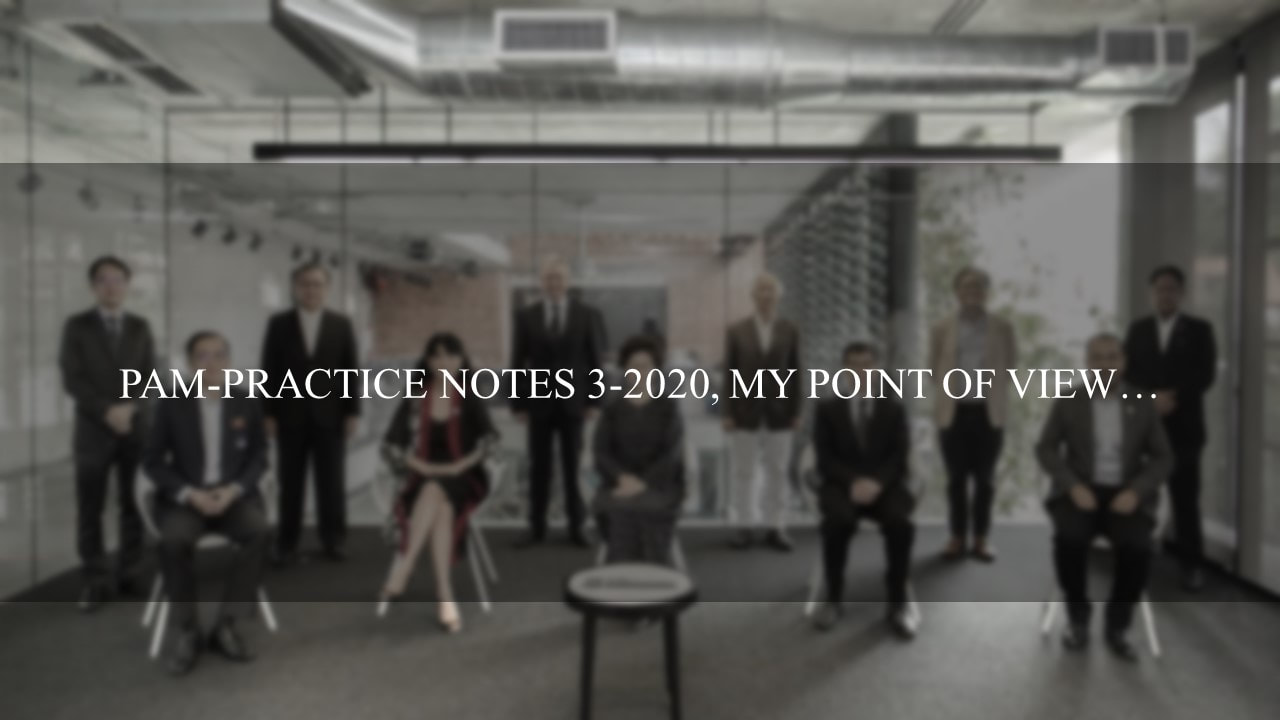
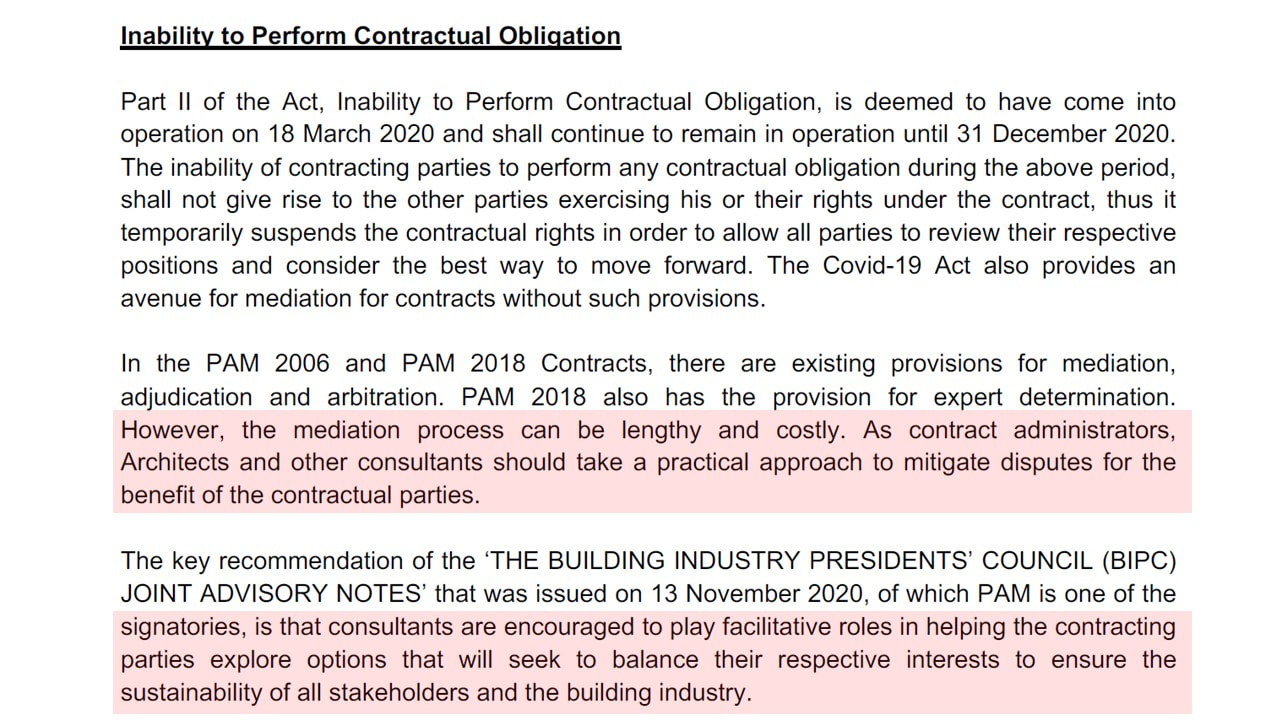
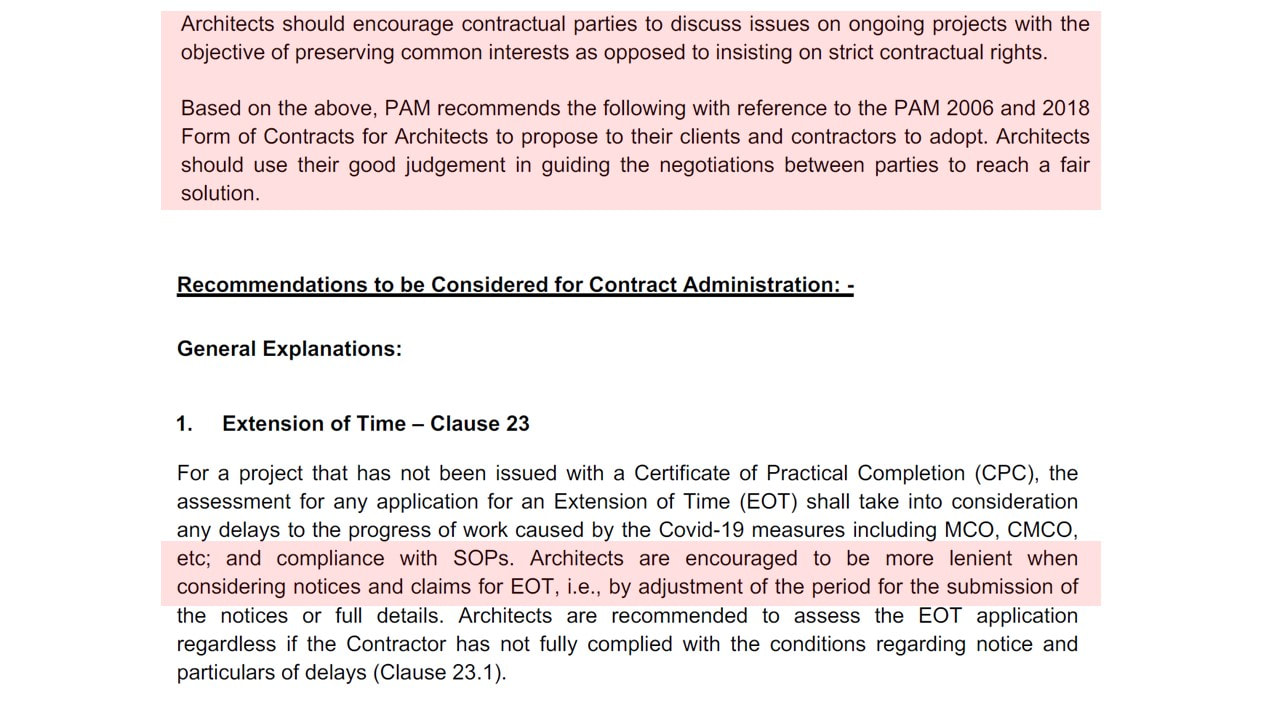
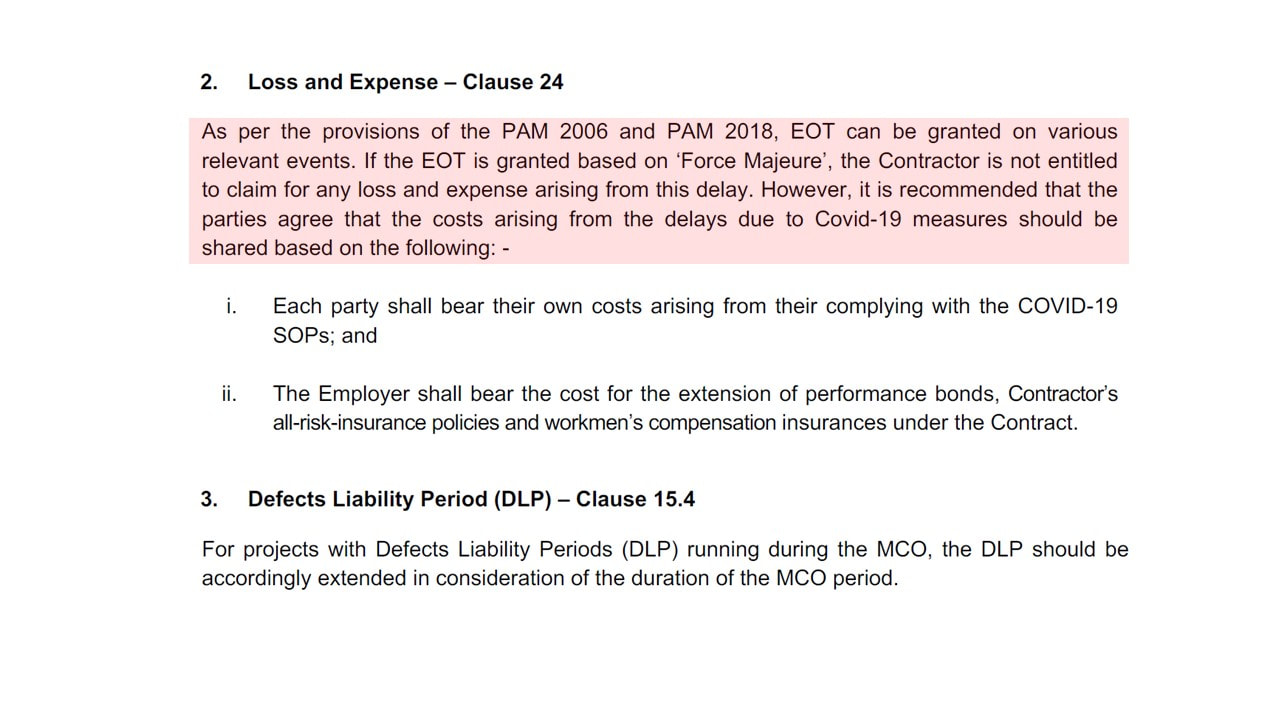
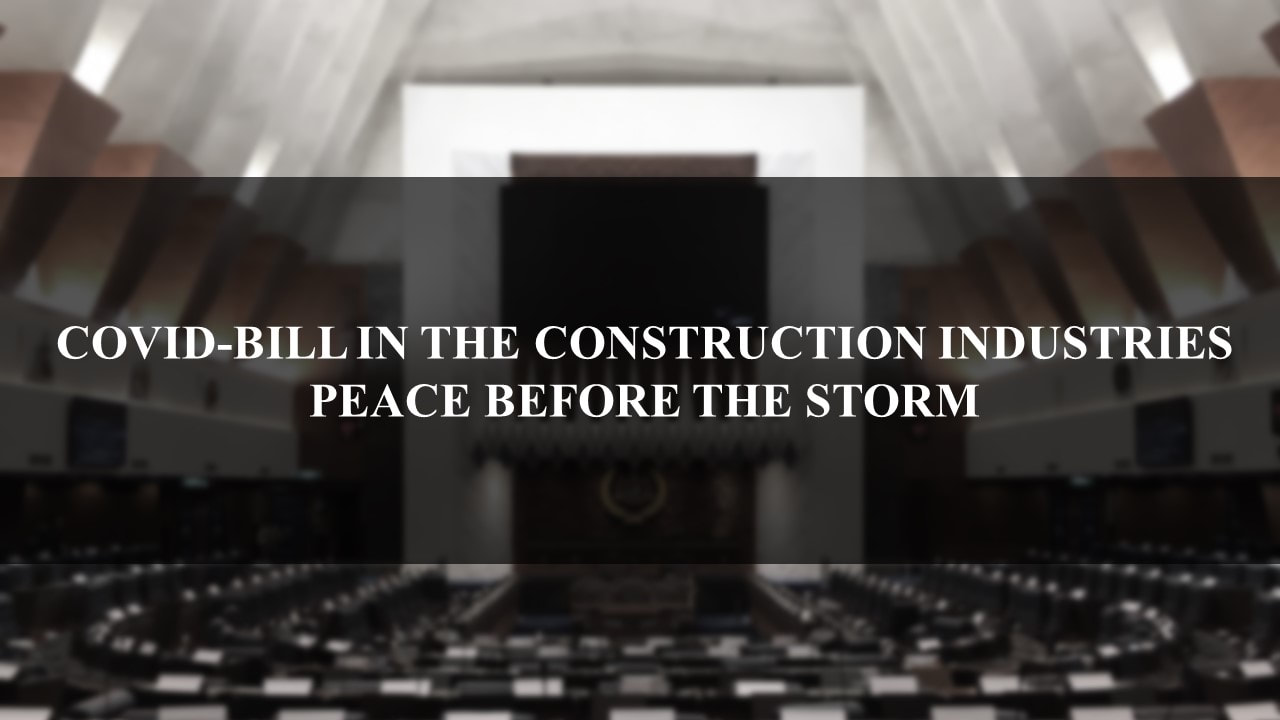




 RSS Feed
RSS Feed
